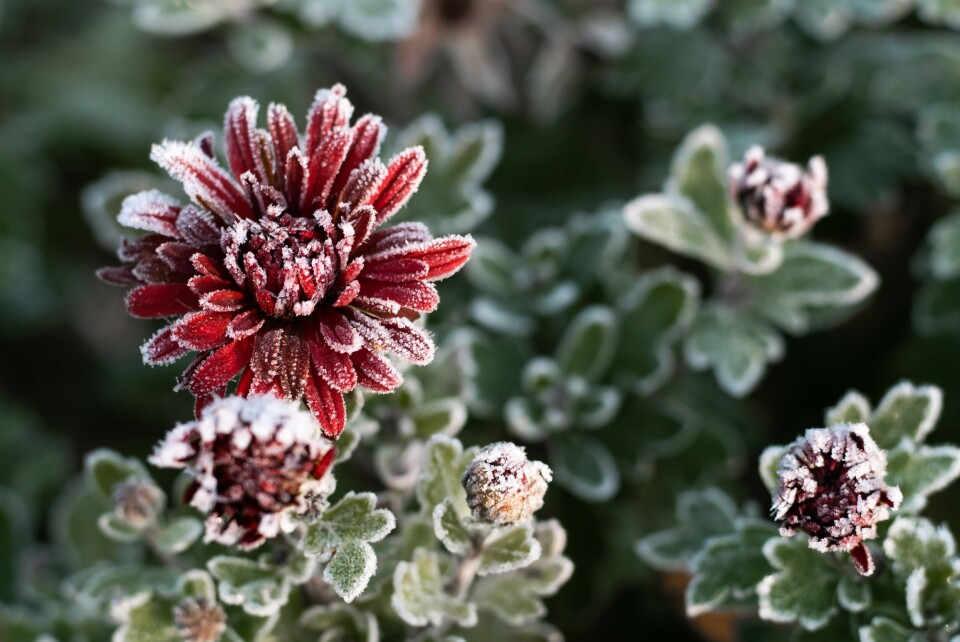-
The origins and meaning of tirer les marrons du feu
As Christmas approaches, we look at a phrase to describe someone who takes advantage of a situation
-
All wrapped up for Christmas: how to protect your plants in France this winter
Discover effective methods to shield your garden plants from winter frost and cold, ensuring their survival and health through the chilly months
-
Preparing your French garden for the festive season and the year ahead
Christmas veg harvest, sustainable Christmas tree options and great deals on outdoor furniture for next summer
Gardening hardiness zones in France and how plants adapt to the cold
Almost two thirds of the country’s plants wither below -12C

Following recent cold spells nationally with temperatures below seasonal norms, we look at a plant hardiness zone map for France to give an overall picture of plants and their robustness to cold.
We also explore what type of plants and trees grow across the country.
Hardiness zones are ranked from 1 to 11 with zone 1 characterising plants that can survive in temperatures as low as - 45C to zone 11 for plants which die at below 4C.
France’s entire territory - with the exception of a few selected areas - ranges between zone 7 for mountains (-18C to -12C) to zones 8 and 9 (-12C to -1C if we combine both zones.)
How the country ranks
Almost two-thirds of the territory to the left of a line which runs from Marseille (Provence-Alpes-Côtes d’Azur) to Bas-Rhin is characterised by a plant environment which can resist temperatures from -12.2C to -1.1C (the equivalent of zones 8 and 9), according to the hardiness map at the website plantsmaps.
All of France’s coastal regions - from the Channel to the Atlantic and Mediterranean - and its inner territories are the warmest places for plants with areas in Lille, Manche region, Brittany, Provence-Alpes-Côtes d’Azur and Gironde recording that plants there die at temperatures below -4C.
The Ile-de-France region is reported to resist temperature extremes from -6.7C to -3.9C.
Only pockets in mountainous areas of Jura, Massif central, the Alps and Pyrenées display a climate where plants are able to adapt to temperatures ranging from -17.8C to -37.2C in rare areas along the Swiss border.
Read more: Can Mouthe claim to be the coldest place in France?
A few peninsula areas in northern and southern Corsica are classed as zone 11 with plants needing temperatures of at least 1.7C to 4.4C depending on variety.
The plant hardiness zone map puts into perspective France's vegetation map from state research organisation, the Centre national de la recherche scientifique (CNRS).
The map shows that areas ranked from zone 8 to 11 have predominantly grown oak trees, alders or beech trees (southern France mainly) while mountain areas of zone 7 have grown beech and pine trees.
Which plants resist the cold best?
Some varieties of cactus, succulents and perennial plants such as the golden barrel cactus, the agave havardiana or the aloe peglerae are several plants able to withstand temperatures as low as -10C.
Heathers such as the ericas, or flowers from the hellebores, violas, primrose or cyclamens families have a reported hardiness from -5C to -28C depending on variety.
Honeysuckles, hostas, clematis and jasmine have varieties which blossom during winter and are capable of resisting cold temperatures as well.
Japanese maple, oleander, aspidistra, bougainvillaea or chrysanthemum also adapt well to extreme temperatures.
Tulips, narcissuses and hyacinths are some of the flowering plants that will use the cold spell to go into vernalisation, the process by which plants promote flowering during a cold spell.
On the other hand, agapanthus, alstroemeria, dahlias and cannas are varieties of flowers that will need to be protected against drops in temperature with a layer of straw at their roots.
Related articles
January flowers in your French garden with scented viburnum
Mediterranean garden in south of France is a winter paradise
























